The illustrations in this post come from A. W. N. Pugin's 'Contrasts' which he wrote and illustrated in 1836. They are worth viewing larger, so do click on them.
In his first polemical work, which had such an influence on the Gothic revival, Pugin spells out the failings and inappropriate uses of the neo-Classic style - then in vogue - and he champions the medieval forms of Britain's Catholic past. It is noteworthy that in his day, Pugin despaired of the Oratorians who espoused the Baroque and neo-Classical architecture of post-Tridentine Rome.
Interestingly and rather controversially, Pugin asserted that only a Catholic society could produce a truly Gothic style and he denigrated the neo-Classical style as a return of paganism.
The illustrations Pugin used in 'Contrasts' were literally a series of contrasts; one image is of a building or object in the neo-classic style, in his mind depleted and inappropriate. Next to it is an image of the same type of structure, but of a proper, honest, and high Gothic design.
So for example, when speaking about the Altar, he inserts the following illustrations:
Pugin says: "In the first - the true Catholic one - every portion breathes the spirit of purity and reverence; the sacred mysteries are depicted in a mystical and devotional manner; the full, draped and modest garments of the figures, the devout and placid position of the angels, the curtains, the embroidered frontal, the two candlesticks and cross, are all in strict accordance with Catholic antiquity and feelings."
Turning his ire to the second illustration, Pugin says: "An altar used for Catholic purposes, but of a debased and profane style, - we discern the fatal effects of revived Paganism. The loose and indecent costume and postures of the figures intended for saints (but which are all concealed copies of the impure models of Pagan antiquity), the classic details devoid of any appropriate signification, the paltry and trifling taste of the ornaments, more suited to a fashionable boudoir than an altar for sacrifice, all evince the total absence of true Catholic ideas of art."
Strong words indeed... and that just about sums up most of the churches in Rome, apart from those in the care of the Dominicans(!) - Santa Sabina, San Clemente, Santa Maria sopra Minerva - among a rare few others in the Eternal City. In his writings Pugin comments in passing on St Peter's in Rome but little else in that city. He is clearly writing for his fellow Englishmen and Wren, Hawkesmoor and Wyatt might be some of the architects he had in mind.
Pugin then laments the fact that he was so pre-occupied with the Protestant destruction of the Altar that he had failed to account for the 'Pagan revival' but finally in 1836, he is able to turn his mind to neo-Classicism. He says: "I did not draw a sufficient distinction between Catholicism in its own venerable garb, or as disguised in the modern externals of Pagan corruption."
I rather suspect we might still be able to apply that sentence today but very differently from that originally intended by Pugin. Today, we might speak of modernist and minimalist influences on church architecture. Indeed, some of us might be very happy to return to 'just' neo-Classical forms, as evinced when the Basilica at Baltimore was recently restored. However I think Pugin rightly prompts us to wonder if the neo-Classical form really best serves traditional Christian piety.
Pugin himself harks back to the glories of medieval Catholicism. He writes: "It is only by communing with the spirit of past ages, as it is developed in the lives of the holy men of old, and in their wonderful monuments and works, that we arrive at a just appreciation of the glories we have lost, or adopt the necessary means for their recovery."
One of these holy men whom Pugin admired greatly was Bishop William of Wykeham who founded Magdalen College at Oxford in 1458. In his later work, 'True Principles of Pointed Architecture'(1841), Pugin made the following illustration of Wykeham's College, considered still to be the ideal Oxbridge college:
Pugin says about it: "The main feature of these buildings was the chapel: to our Catholic forefathers the celebration of the divine office with becoming solemnity and splendour formed a primary consideration... the place set apart for this holy purpose generally towered over the surrounding buildings... How Catholic wisdom and Catholic piety stand conspicuous in all the arrangements of these noble buildings! How great the master mind who planned and executed them, and yet how few are there in these days able to understand or willing to imitate them!"
Pugin's ringing words still apply today, indeed ever more so. However, I think he would not want mere imitation of our older forms, but rather would desire that the architecture we produce is an organic expression of our Catholic wisdom and piety. Where these both have been lost or dimmed, so too, our architecture reflects that loss. Such is the beauty and reality of sacramentals - they express an interior reality.
Therefore, I think a reform of our liturgy and art can only come from a reform of our Christian lives. The debates, arguments, study serve to inform the mind but the mind also has to be sanctified by prayer and contemplation.
Pope Benedict XVI once wrote in 'The Spirit of the Liturgy' that "Man himself cannot simply 'make' worship. If God does not reveal himself, man is clutching empty space... Liturgy implies a real relationship with Another, who reveals himself to us and gives our existence a new direction" (pp22-23). Unsurprisingly then, Pope Benedict has gone about exhorting us to strengthen and re-discover God in prayer and in love. He has told us that God is love, and in seeking love, we have a real relationship with Him. Only then will God reveal Himself to us, and the worship, the Liturgy, we offer in spirit and in truth will be an expression of that relationship. Otherwise, we run the risk of fabricating our worship.
As Pugin said: "Before true taste and Christian feelings can be revived, all the present and popular ideas on the subject must be utterly changed. Men must learn that the period hitherto called dark and ignorant far excelled our age in wisdom, that art ceased when it was said to have been revived, that superstition was piety, and bigotry faith."
In short, a reform of our lives in accordance with the faith and wisdom of Christian antiquity must precede any reform of the Liturgy and Christan art. I think we can agree with that but I wonder how many of us concur with Pugin's instinct that the Gothic form is the fruit of genuine Catholic contemplation?
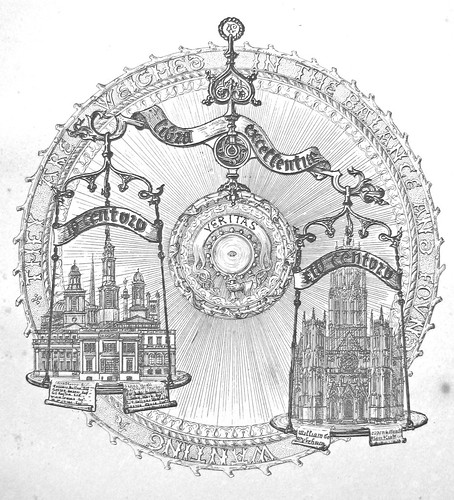
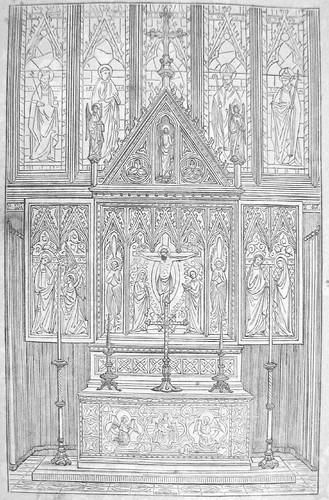
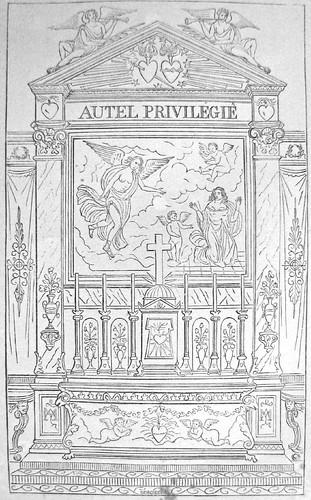
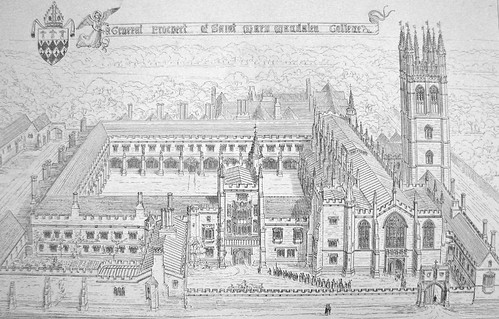
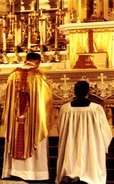


No comments:
Post a Comment